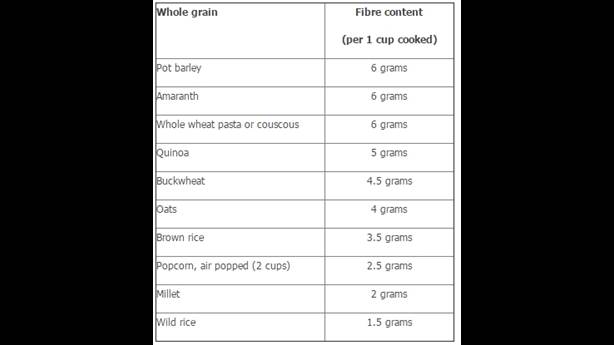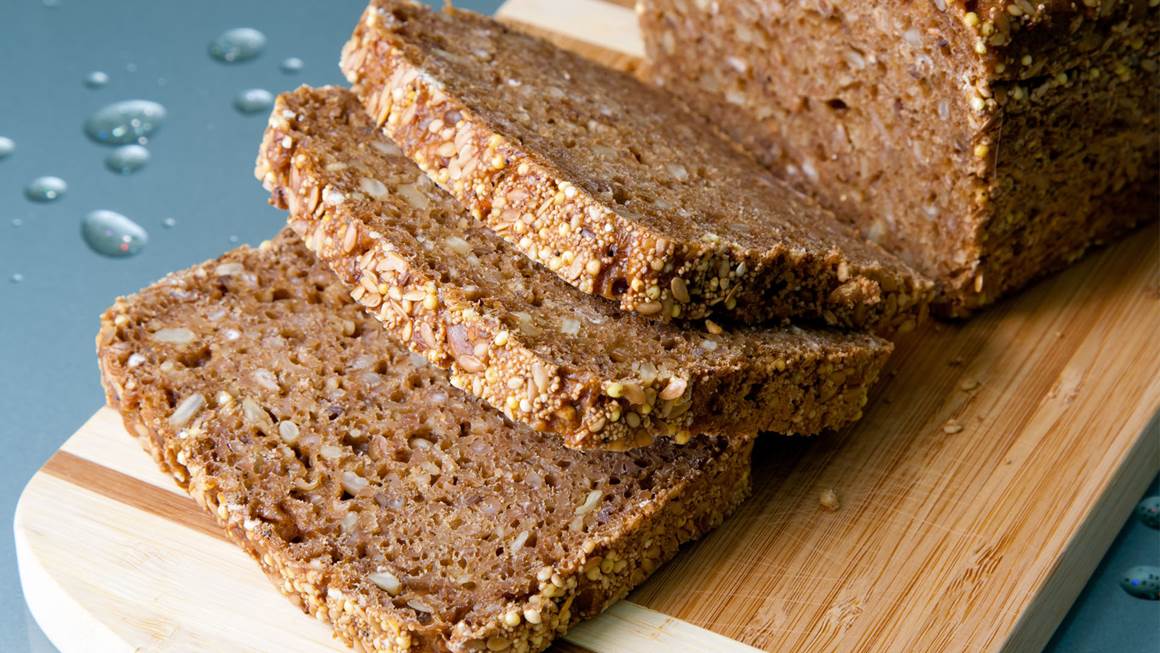What’s great about whole grains? For starters they contain all three parts of the grain kernel: the fibre-rich bran, the starchy endosperm, and the germ, packed with vitamins and minerals. Examples are brown rice, oats and whole grain wheat.

Cara Rosenbloom, RD
Big health benefits
People who eat three or more servings of whole grain foods each day have up to 30 percent less risk of developing heart disease compared to people who rarely eat whole grains. Plus, whole grains may help lower cholesterol levels and reduce the risk of stroke. Those are huge benefits from foods that taste great too!
When grains are processed or refined, the bran and germ get stripped away, taking most of the fibre, B vitamins, vitamin E, trace minerals and antioxidants with them. Examples of refined grains are white rice and white flour.
Buying whole grains
When you shop, think beyond whole wheat bread. Here are some tips for choosing whole grains:
- When buying bread, look for the term “100% whole grain” rather than just “whole wheat flour.” In Canada, “whole wheat” just needs to have 95% of the grain intact. The 5% that’s removed includes much of the germ and some of the bran.
- Choose less-refined hulled or pot barley instead of more-refined pearl barley.
- Look for breakfast cereals and crackers made from whole grain oats, rye, wheat, corn or rice – but make sure the words “whole grain” come before the name of each grain, i.e. whole grain rye.
- Don’t be fooled by kamut and spelt. These are two varieties of wheat, but they are not whole grain unless the ingredient list says “whole grain spelt/kamut.”
- Look for oats, buckwheat, brown rice and quinoa – these are always whole grains.
- Choose whole wheat pasta, or try varieties made from brown rice or whole grain rye.
- Couscous is not a whole grain. It is a type of small pasta made from refined durum wheat. However, you can buy whole wheat couscous, which is similar to whole wheat pasta.
- Popcorn is a whole grain! Two cups of air-popped popcorn counts as one serving of grain in Canada’s Food Guide, but hold the butter and the salt.
- Watch out for deceptive marketing words such as stone-ground or multigrain – they do not mean that a product is made with whole grains.
And when it comes to fibre, check out how much whole grains deliver:

Cooking whole grains
Whole grain pasta, bread and brown rice can easily be substituted for their refined counterparts in the same recipes.
To get you started, here are some easy and scrumptious recipes that incorporate some of our favourite whole grains.
Join our groups
